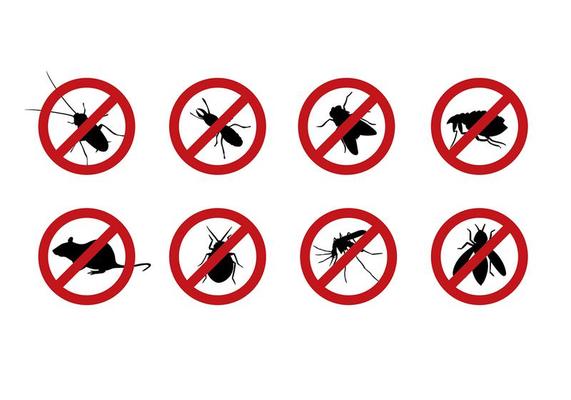Bed Insect Treatment Breakdown: Contrasting Chemical Vs. Non-Chemical Solutions
In the realm of pest control, specifically when handling the consistent concern of bed pests, the choice in between chemical and non-chemical therapy solutions can be an essential one. Both methods supply unique benefits and drawbacks, affecting elements such as effectiveness, safety considerations, and general price. By examining the nuanced details of each technique, a clearer understanding of which course to pursue in dealing with a bed pest invasion can be obtained.
Efficiency of Chemical Therapies
Chemical treatments for bed insect problems have been widely identified for their powerful and rapid efficiency in eradicating these insects. When taking into consideration the efficiency of chemical treatments, it is critical to understand that they can supply a fast and extensive solution to a bed insect trouble.
In addition, chemical treatments have the advantage of supplying recurring impacts, indicating that they can continue to eliminate bed pests even after the preliminary application. This residual action is specifically advantageous in combating any type of potential re-infestations. Furthermore, the quick activity of chemical therapies can bring relief to people dealing with serious bed bug infestations, enabling them to reclaim control of their home swiftly.
Security Worries With Chemical Solutions
One crucial element that needs cautious consideration when making use of chemical options for bed bug therapy is making certain the safety and security of occupants and the atmosphere. Exposure to particular chemicals utilized in bed pest therapies can lead to breathing issues, skin irritation, or other adverse responses, especially in people with pre-existing conditions or sensitivities.
In addition, the ecological influence of chemical options is one more considerable consideration. Some chemicals utilized in bed insect treatments may be damaging to advantageous bugs, wildlife, and communities if they seep into the dirt or water systems. It is important to use chemical therapies carefully, adhering to security standards, and thinking about less hazardous options to alleviate these threats and make sure the reliable and risk-free administration of bed pest invasions.
Advantages of Non-Chemical Strategies
Considering the possible safety and security worries and environmental effect related to chemical options for bed bug therapy, discovering non-chemical strategies provides an encouraging option with a number of distinctive advantages. Non-chemical techniques provide a safer choice for homes, specifically those with youngsters, individuals, or pets delicate to rough chemicals. These approaches eliminate the threats of direct exposure to poisonous materials, lowering the potential for negative health impacts. Additionally, non-chemical treatments are eco-friendly, as they do not add to air or water pollution, making them a lasting selection for bug control.
Additionally, non-chemical services can be effective in targeting bed pests, consisting of hard-to-reach locations where chemical therapies may not permeate - A1 charlotte bed bug exterminator. Methods such as heat therapy, vacuuming, heavy steam cleansing, and cushion encasements provide detailed elimination without the use of unsafe chemicals.
Limitations of Non-Chemical Treatments

Furthermore, non-chemical treatments typically require several applications to achieve effective obliteration. This can be lengthy and might not constantly guarantee total elimination of all bed pests and their eggs, especially in hidden or hard-to-reach areas.
In addition, the success of non-chemical therapies greatly relies upon i loved this correct implementation and thoroughness, which can be testing for people without expert proficiency. Inadequate application of non-chemical approaches may lead to incomplete eradication, bring about consistent problems and the demand for extra therapies.
For that reason, while non-chemical therapies have their advantages, it is necessary to recognize these constraints and consider them when establishing the most efficient method for taking care of bed insect problems.
Price Contrast: Chemical Vs. Non-Chemical Options
Offered the constraints linked with non-chemical treatments, an essential facet to assess in the context of bed bug management is the price comparison between chemical and non-chemical alternatives. In contrast, non-chemical therapies like warm therapy or vapor can be a lot more pricey, with expenses varying from $1,000 to $6,000 for an entire home. While the preliminary cost of chemical treatments may seem reduced, multiple treatments might be required to fully eradicate the invasion, possibly increasing the overall price.
Conclusion

Considering the prospective security problems and ecological effect linked with chemical solutions for bed bug treatment, discovering non-chemical techniques presents pest control houston an appealing option with numerous distinct benefits.Provided the constraints associated with non-chemical treatments, a necessary element to assess in the context of bed insect monitoring is the price contrast between chemical and non-chemical alternatives. In contrast, non-chemical treatments like heat treatment or steam can be a lot more costly, with prices varying from $1,000 to $6,000 for a whole home. While the preliminary expense of chemical therapies might appear reduced, multiple treatments may be needed to totally remove the invasion, potentially enhancing the general expense.In verdict, when contrasting chemical and non-chemical bed bug treatment choices, it is crucial to take into consideration performance, safety, benefits, restrictions, and cost.